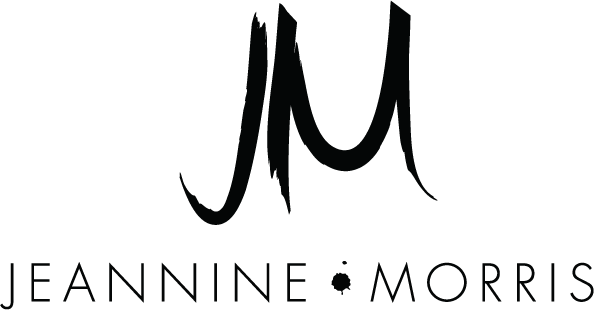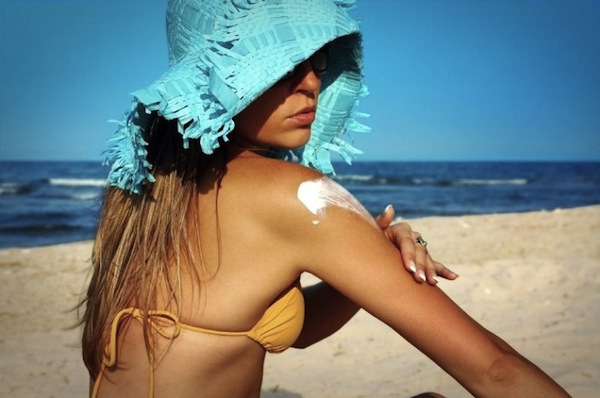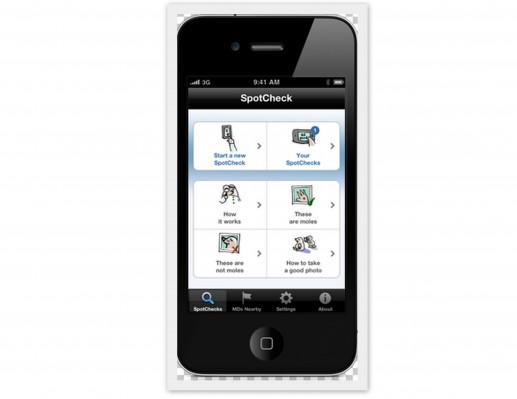 I've had my post-summer Fraxel appointment booked since summer began and it finally came. The last week of August seemed like the perfect time. Even though it was right before Labor Day Weekend, I knew my plans wouldn't have me basking in the sun. Yesterday, I entered my trusty derm's office, Dr. Ilyse Lefkowicz, anxious and excited, but more than anything nervous as I'm big on instant gratification and this is as close as it gets when it comes to clearing your complexion of hyperpigmention. I was ready to say good by to my brown spots – all of them.
So what have I done so far to get rid of them? Most recently I've been using topicals like Vitamin C, but I've even bleached my face out in an unsafe way with hydroquinone in the past. I've also done an IPL (targeted laser treatment that gets rid of brown spots), which worked, but obviously like any obsessed beauty guru who is about to turn 30 (in 6 months) I wanted more. After speaking with my derm about whether or not to do a few more IPL sessions she recommended one Fraxel treatment as it would be more cost effective and get the job done. I was after a perfect complexion. Fraxel is a cosmetic laser treatment that helps to renew the skin. Depending on the setting, it can rid brown spots, acne scars and help diminish fine lines and wrinkles.
I've had my post-summer Fraxel appointment booked since summer began and it finally came. The last week of August seemed like the perfect time. Even though it was right before Labor Day Weekend, I knew my plans wouldn't have me basking in the sun. Yesterday, I entered my trusty derm's office, Dr. Ilyse Lefkowicz, anxious and excited, but more than anything nervous as I'm big on instant gratification and this is as close as it gets when it comes to clearing your complexion of hyperpigmention. I was ready to say good by to my brown spots – all of them.
So what have I done so far to get rid of them? Most recently I've been using topicals like Vitamin C, but I've even bleached my face out in an unsafe way with hydroquinone in the past. I've also done an IPL (targeted laser treatment that gets rid of brown spots), which worked, but obviously like any obsessed beauty guru who is about to turn 30 (in 6 months) I wanted more. After speaking with my derm about whether or not to do a few more IPL sessions she recommended one Fraxel treatment as it would be more cost effective and get the job done. I was after a perfect complexion. Fraxel is a cosmetic laser treatment that helps to renew the skin. Depending on the setting, it can rid brown spots, acne scars and help diminish fine lines and wrinkles.
Prior to lasering, Dr. Lefkowitz coated my face with a thick numbing cream and I sat for an hour checking my emails as my lips went numb... then, everything else. She explained that she was going to do eight passes over my face with the laser and I would feel a tingling sensation. The machine has a cooling agent attached to the laser so I felt cool air blowing on my numb skin as I felt an irritating, yet tolerable scratching pins and needles like sensation. My forehead was the most sensitive and I just kept breathing as Dr. Lefkowitz fried the skin on each section of my face.
Overall the treatment took about 20 minutes and then I iced. I left embarrassed as I left her office as I looked like I had a horrible sunburn on my face and neck with puffy eyes and cheeks. Being that I'm so pale everywhere else I really looked ridiculous. Wishing I had a scarf to wrap myself up in, I did my best to hide behind my sunglasses and ran home.
This week, as I hibernate I'll experience peeling (new skin!) I'm using gentle cleansers and moisturisers with SPF provided to me by Dr. Lefkowicz. One of them being Cerave. This time next week my face will be as soft, smooth and clear as a baby's bottom. The type of setting my Fraxel treatment was set for was key for targeting photo-damage: brown spots from the sun or aging. Dr. Lefkowitz did mention that treating melasma is tricky and this may not be the answer. Some patients may also need more than one treatment to rid their photo-damage. Looks like I'll only need one (I hope). I'll write next week and post "After" pics to show you how it came out!
Dr. Ilyse Lefkowicz can be found at 875 5th Ave, New York, New York 10065. Call her for an appointment at (212) 288.3200.




 Earlier this month I received an email from a publicist about
Earlier this month I received an email from a publicist about 


















